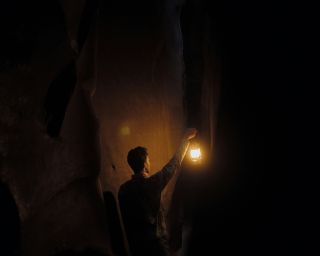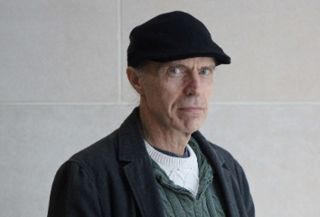Grief
What We Know About After-Death Communication Experiences
Is death really the end of everything? Research offers clues.
Updated July 23, 2024 Reviewed by Devon Frye
Key points
- Having experiences that feel as if one is interacting with a deceased person are common.
- These experiences tend to be positive and may even be experienced as therapeutic.
- Research finds that after-death communication experiences can occur outside of grief.

Co-authored with Imants Barušs, Ph.D.
After-death communications (ADCs) refer to the apparent communication of the deceased with the living, which are sensory experiences in nature. Experiences range significantly but can include full-body visualizations, dreams, hearing footsteps, electronic devices flickering on or off, feeling a hug, or conversations with the deceased.1 Noted psychologist Carl Jung had dreams of his father after his father’s death, which made him think more about life after death.
ADCs are surprisingly common; studies conducted on various populations have found prevalence rates ranging from 31 to 82 percent.2 These numbers sometimes include those who were previously doubtful of the validity of such experiences—including, in one case, a skeptic who was rattled by the apparently spontaneous playing of a broken radio during his wedding.3 Even people who identify as atheists can report these experiences, according to empirical survey data across diverse populations.4
A robust amount of scholarly literature around ADC experiences has emerged in recent times, which explicitly describes ADCs as helpful, reassuring, transformative, and positive in some capacity for most experiencers. This is supported by many clinical experts in thanatology, psychology, end-of-life care, and medicine, who have discussed ADCs as non-pathological experiences that are often supportive, meaningful, and affirming for the bereaved.5
Continuing Bonds Theory
Continuing bonds theory, which is observable in cross-cultural traditions across the world, demonstrates how having an authentic sense of connection to the deceased tends to be therapeutic rather than harmful.6 This framework for understanding grief, based partially on attachment theory and cultural studies, outlines how individuals, families, or communities who are grieving do not need to disconnect from the deceased.
Continuing bonds affirms that grief doesn’t subscribe to a rigid timeline, and that people can live their lives freely without needing to repress or sever their relationship with the deceased.7 By continuing an ongoing relationship with the deceased, people can grapple with the deeper meaning of loss over time in a way that is personally meaningful. Thus, continuing bonds theory normalizes after-death communication experiences.
Traditional continuing bonds theorists frequently emphasize symbolic, emotional, or active participation in memorial activities, which emphasizes the mental representation of the deceased within people who are bereaved.8 As a result, some continuing bonds scholars simply convey that the "dead are dead." These theorists are correct in acknowledging a person has physically died, and thereby an observable change in a relationship has occurred.
However, after-death communication experiences challenge the notion of what death even means. The entire ADC research literature demonstrates how continuing bonds may not be merely a mental representation; there is some possibility that an interactive connection could potentially occur between the living and the deceased.
After-Death Communications Occur Outside of Grief
Research finds that some people experience anomalous experiences in which the deceased person is clearly a separate entity, and many people report that it is the deceased who "initiates" these experiences spontaneously.4
Elsaesser et al. (2021) discovered that 27 percent of research participants who had ADC experiences identified as not being in a state of grieving or mourning; some people had never even known the deceased person they believed they were connecting with, and thus never grieved. This demonstrates how some people have after-death communication experiences outside the context of grief and bereavement. In other words, this suggests that ADCs are not merely an extension of the grieving process, and that something else may be happening here.
The Survival Hypothesis
In the eyes of some, after-death communication experiences support the survival hypothesis, which suggests that consciousness continues after physical death. Experiences like these make us question the notion that there is only oblivion upon death. It is possible that interactions with the deceased mean that memories, perceptions, and individual experiences do not stop with physical death.
In the West, most of us were educated and socially conditioned to believe these sorts of things aren’t supposed to happen, but they do. Personally, we encourage readers to keep an open mind around after-death communication experiences and to follow the evidence where it leads. Science is an empirical investigation of whatever one wishes, which does not have to be defined by societal norms or follow dogmatic beliefs about materialism.9
ADC experiences provide us with rich opportunities to explore the nature of consciousness. The question of whether we continue to exist in some form after death has serious consequences for the way we live.

This post was co-authored with Imants Barušs, Ph.D., a Professor in the Department of Psychology at King's University College at Western University. He is the author of 8 books, over 50 academic papers, and over 100 presentations at conferences and universities around the world.
Readers who are interested in learning more can read Death as an Altered State of Consciousness and Transcendent Mind: Rethinking the Science of Consciousness.
Facebook/LinkedIn image: tairome/Shutterstock
References
1. Barušs, I. (2023). Death as an altered state of consciousness: A scientific approach. American Psychological Association.
2. Kamp, K. S., Steffen, E. M., Alderson-Day, B., Allen, P., Austad, A., Hayes, J., Larøi, F., Ratcliffe, M., & Sabucedo, P. (2020). Sensory and quasi-sensory experiences of the deceased in bereavement: An interdisciplinary and integrative review. Schizophrenia Bulletin, 46(6), 1367–1381.
3. Shermer, M. (2014). Infrequencies. Scientific American, 311(4).
4. Elsaesser, E., Roe, C. A., Cooper, C. E., & Lorimer, D. (2021). The phenomenology and impact of hallucinations concerning the deceased. BJPsych Open, 7(5), Article e148.
5. Penberthy, J. K., Pehlivanova, M., Kalelioglu, T., Roe, C. A., Cooper, C. E., Lorimer, D., & Elsaesser, E. (2023). Factors moderating the impact of after death communications on beliefs and spirituality. OMEGA - Journal of Death and Dying, 87(3), 884–901.
6. Klass D., & Steffen E. (2018). Introduction: Continuing bonds—20 years on. In D. Klass, & E. Steffen (Eds.), Continuing bonds in bereavement: New directions for research and practice (pp. 1–14). Routledge.
7. Shelvock, M., Kinsella, E. A., & Harris, D. (2022). Beyond the corporatization of death systems: Towards green death practices. Illness, Crisis, and Loss, 30(4), 640-658.
8. Jahn, D. R., & Spencer-Thomas, S. (2018). A qualitative examination of continuing bonds through spiritual experiences in individuals bereaved by suicide. Religions, 9(8), 248-.
9. Barušs, I., & Mossbridge, J. (2017). Transcendent mind: Rethinking the science of consciousness. American Psychological Association.




